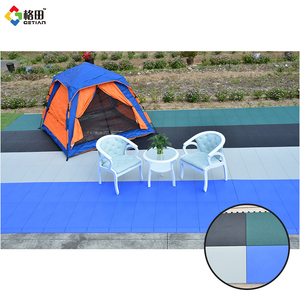
All categories
Featured selections
Trade Assurance
Buyer Central
Help Center
Get the app
Become a supplier

(17605 products available)















































Tent flooring is an essential component for any outdoor event, providing a stable and comfortable surface underfoot. Whether it's for a wedding, a camping trip, a corporate event, or a festival, the right flooring can transform any tent into a more functional and inviting space. This comprehensive guide will delve into the various types of tent flooring available, the features they offer, and the materials they are made from, ensuring that buyers can make an informed decision for their specific needs.
When it comes to tent flooring, there is a plethora of options designed to suit different environments and occasions. Outdoor tent flooring is robust and designed to withstand the elements, making it ideal for events held in unpredictable weather. For those looking for something more luxurious, tent with padded floor options provide extra comfort underfoot, ideal for upscale events like weddings.
Camping tent flooring is tailored for the outdoor enthusiast, often lightweight and easy to transport. For a more traditional and rustic look, a canvas tent with floor is a popular choice, whereas a tent with inflatable floor provides a unique and modern twist, offering quick installation and a cushioned surface. Event tent flooring is typically more durable and heavy-duty, designed to withstand high foot traffic during gatherings such as trade shows or concerts. For special occasions that involve dancing, a tent dance floor or party tent with dance floor can be installed, ensuring a smooth and stable surface that allows guests to dance the night away. Specialty flooring, such as yurt flooring or bell tent flooring, is also available to fit specific tent shapes and sizes, catering to a niche market.
The materials used for tent flooring vary widely, each with its own set of characteristics to match the function of the space. Outdoor tent flooring options often include high-density plastic or rubber, materials known for their durability and ease of cleaning. For a more natural look, tent floor carpet can be used, which adds warmth and insulation to the tent interior. Heavy-duty vinyl or laminates are commonly used for event tent flooring, as they can endure the wear and tear of commercial use. Canvas wall tent with floor models often utilize treated canvas that is both water-resistant and sturdy. For those who prefer a DIY approach, diy tent flooring can be constructed using interlocking tiles or rolls of material that can be cut to fit the desired area—this allows for a high level of customization and personal touch.
Tent flooring features can greatly enhance the usability and comfort of a tented space. Some tent flooring options are designed to be portable and modular, such as portable tent flooring that can be easily assembled and disassembled. This is particularly useful for travelling events or temporary setups. Water resistance is another important feature, especially for outdoor tent flooring and camping floors, as it prevents moisture from seeping in and keeps the interior dry. For events like outdoor weddings, tent flooring for outdoor wedding needs to be both aesthetically pleasing and functional, able to protect against uneven ground while also complementing the decor.
Safety is another consideration, with many flooring options designed to be slip-resistant. This is crucial for areas that will see a lot of movement, such as a dance tent or a party tent flooring area. Insulation is a feature often overlooked, but for camping or colder environments, insulated flooring such as a tent with floor or tent foam floor can provide added warmth. Tent flooring is a versatile and necessary element for many outdoor structures.